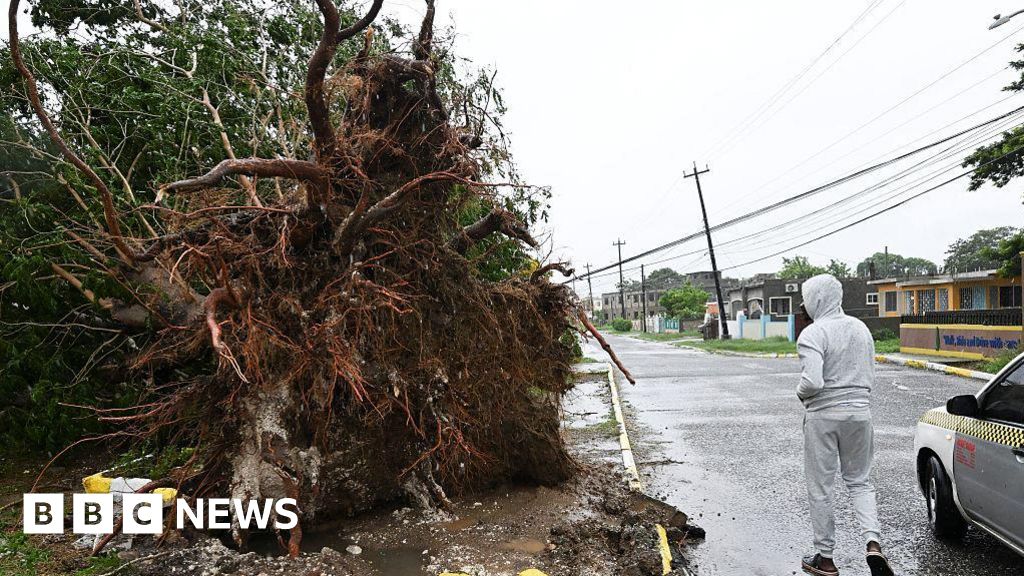It might look a bit like a spaceship, but this small steel pod takes mankind one step closer to living at the bottom of the sea.
Designed to operate at a depth of 50m (164ft), it consists of a living chamber, a dive centre and a foundational base.
The habitat, named Vanguard, will allow up to four 'aquanauts' to live and work in the murky depths of the ocean.
Living there will give researchers the opportunity to dive for hours at a time, carrying out studies that would be otherwise impossible.
The main part of the pod, measuring 12 metres (40 feet) long by 3.7 metres (12 feet) wide, is where scientists would eat, sleep and work.
It comes equipped with individual bunks, a galley to cook food and a toilet. The dive centre, meanwhile, is where people can change into their dive gear and exit into the ocean through the 'moon pool'.
A surface support buoy provides air, water, waste removal, electricity and communications to the steel habitat, where visitors can stay for a week or more.
'Beneath the surface of the ocean lies a vast, largely unexplored frontier that has fascinated humans for centuries,' DEEP, the company behind the design, said.
Vanguard was unveiled this week in Miami, Florida, and will open up 'a whole new realm of science'
The underwater pod features a galley, seating area and table. 'Aquanauts' could live on board for a week or more
When the beds are 'down', they provide sofas for up to four people to sit, eat, socialise and work
'DEEP is setting out to change this by pioneering a new era of underwater living. Their ambitious mission – to make humans aquatic – begins with Vanguard and represents a major step forward in how people can live and work beneath the waves.'
Vanguard was unveiled this week in Miami, Florida, and will open up 'a whole new realm of science', experts said.
Currently, normal surface diving methods only allow humans to spend limited time deep in the ocean.
Spending time on Vanguard will mean divers will be able to explore at depth for hours on end before returning to the habitat, DEEP said.
By allowing teams to remain submerged for extended periods, the pod will enable more comprehensive research and real-time observation of marine life.
This could revolutionise areas such as coral reef restoration, climate monitoring and even astronaut training for future space missions.
DEEP said it has a larger vision – to have 'a global network of underwater habitats that could give humans a permanent presence in the ocean'.
For now, the pod is situated only 20 metres (65ft) underwater, but the prototype is designed to sit comfortably at 50m (164ft).
The dive centre (left) is where people can change into their equipment. The image on the right shows the toilet facilities on-board
The seating area can be easily transformed into a bedroom, with visitors having individual bunks
This artist's impression shows two people scuba diving next to the pod. The idea behind Vanguard is to allow for much longer diving expeditions and research
It has been designed with safety in mind, and has the capability of withstanding the subsurface effects of a category 5 hurricane.
Once all systems have been tested and approved, Vanguard will be properly deployed for the first time so engineers can run drills, operational and emergency procedures.
There is not yet a fixed date for when that will be, but DEEP say it will be revealed – along with the location - by the end of the year.
The company is also working on another design, a 'hotel-like' base called Sentinel, which is set to one day be located 200m (660ft) below the surface off the coast of Wales.
Vanguard: Key specs
- 12 metres (40 feet) long by 3.7 metres (12 feet) wide (living area)
- 50m (164ft) operating depth
- All steel construction
- Surface support buoy provides air, water, waste removal, electricity and communications
- Capacity for four 'aquanauts' to live for seven days or more
- 10-year deployment period
 (1).png)
 1 day ago
4
1 day ago
4

















